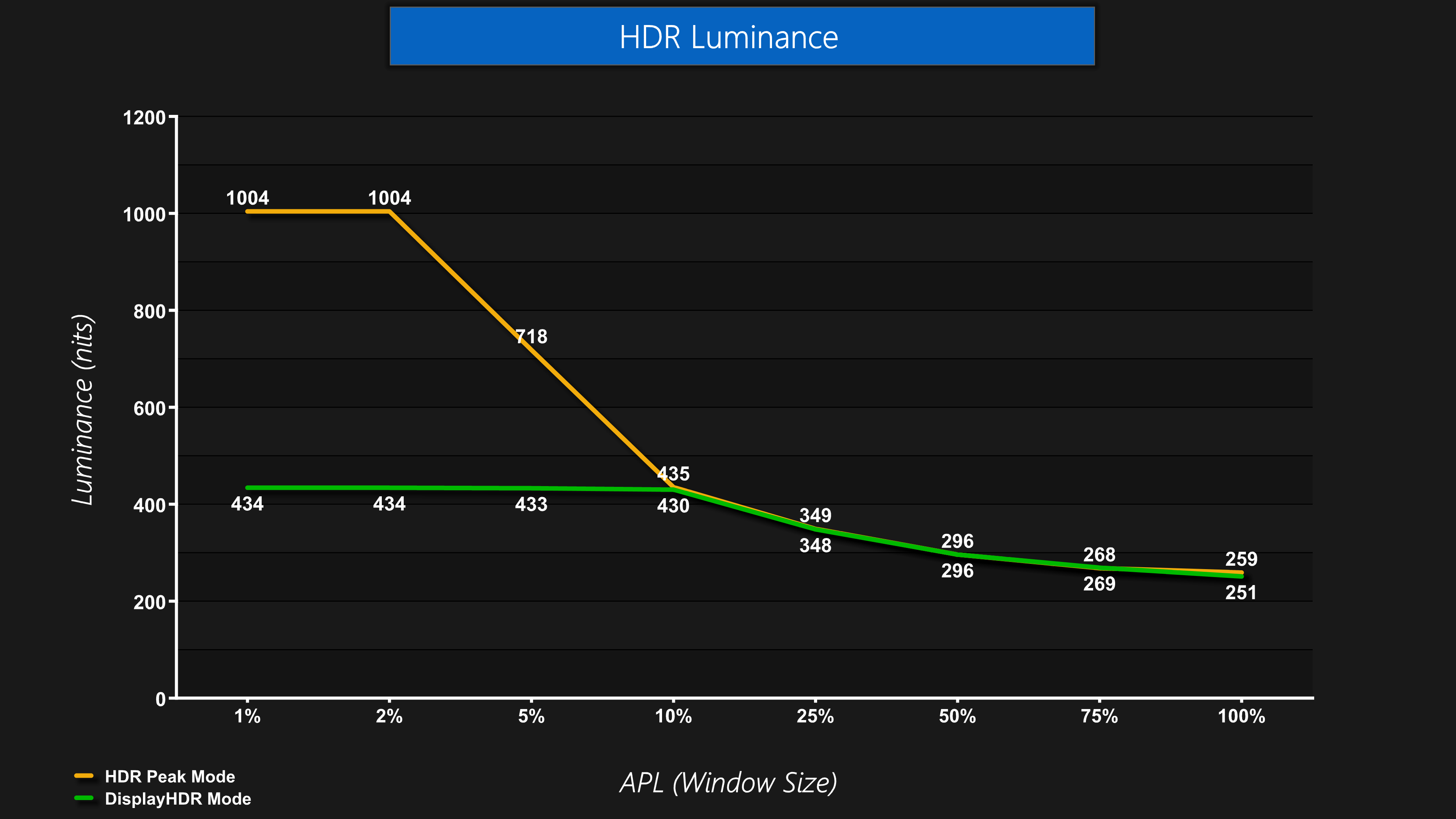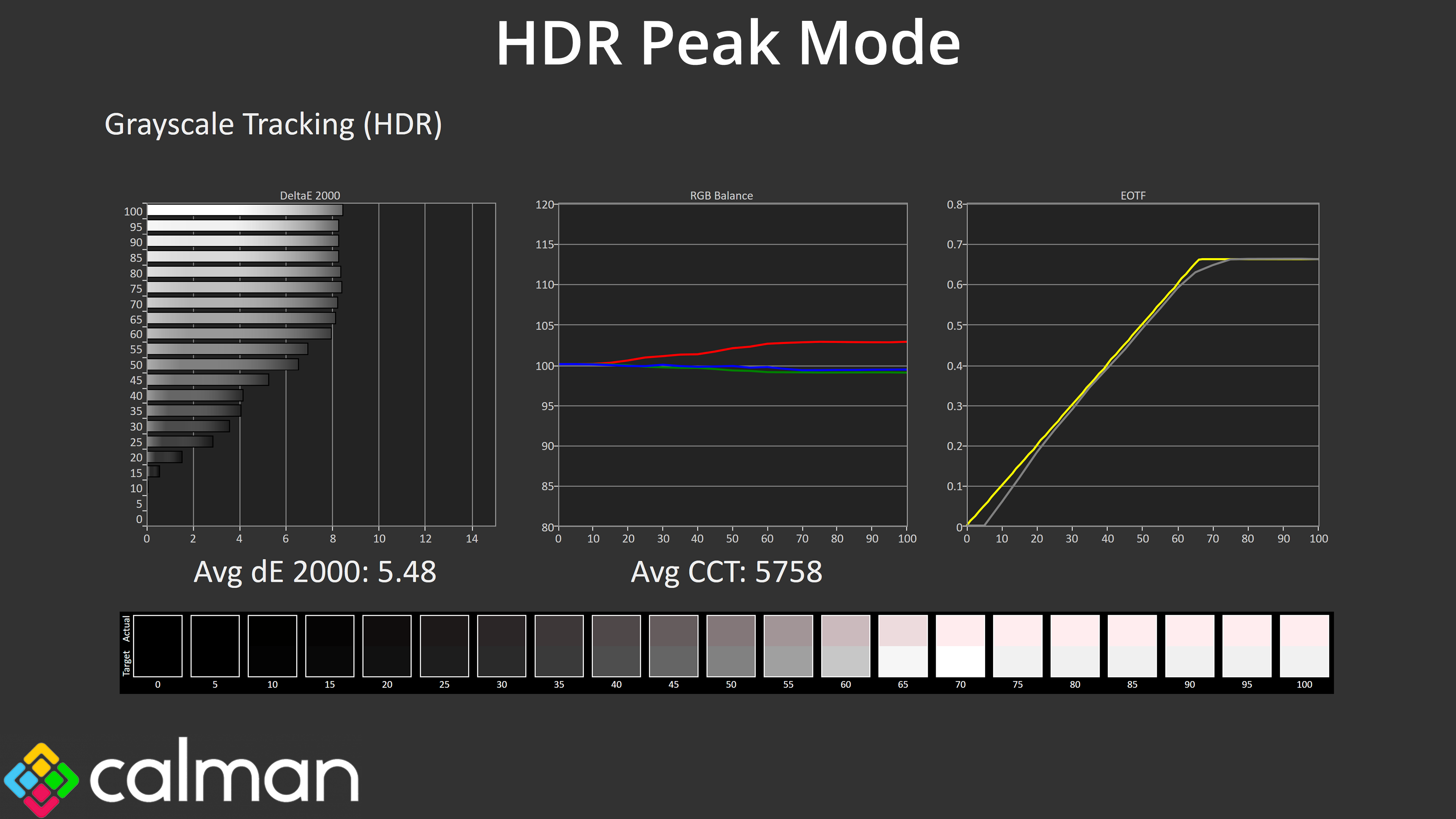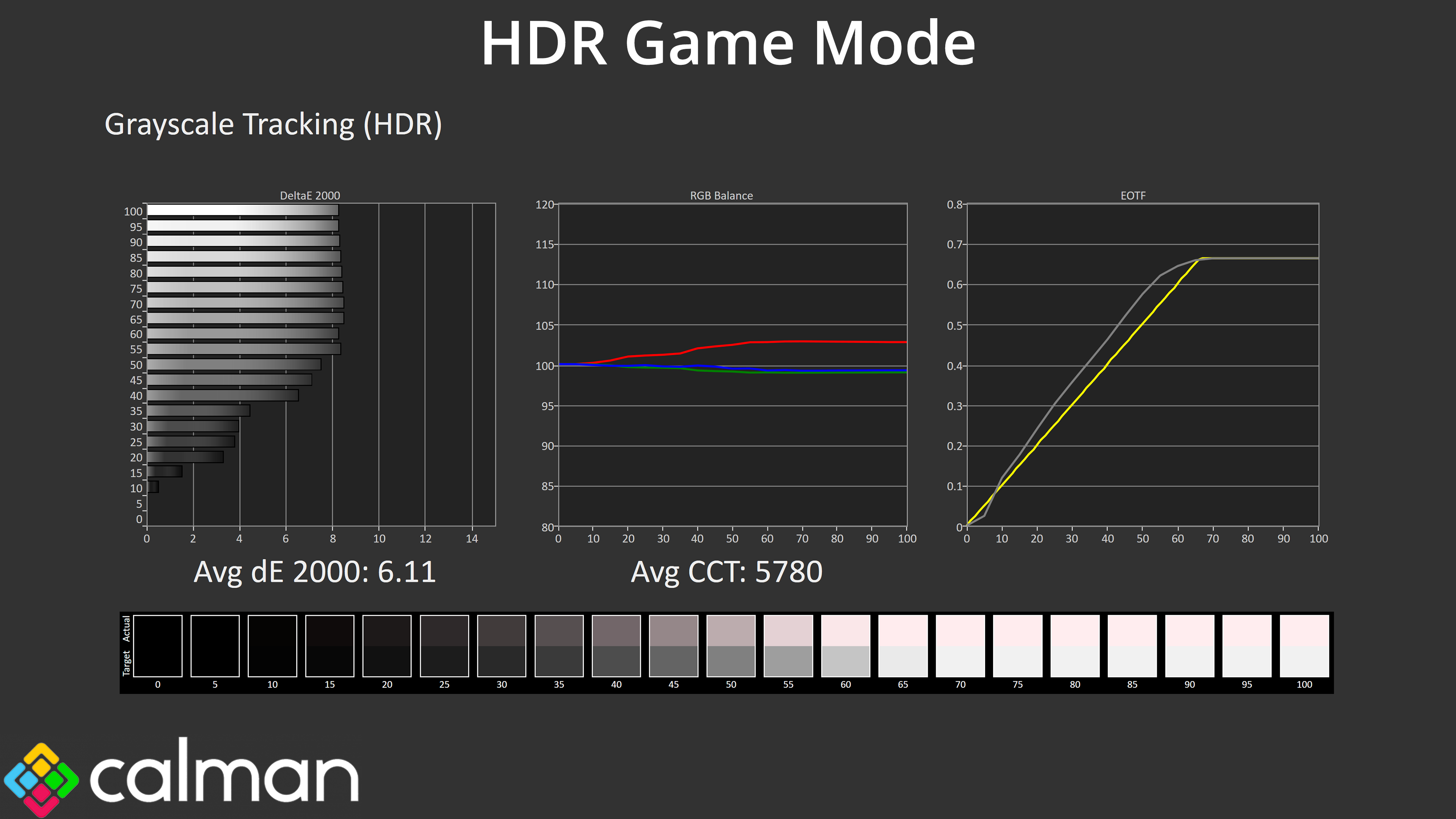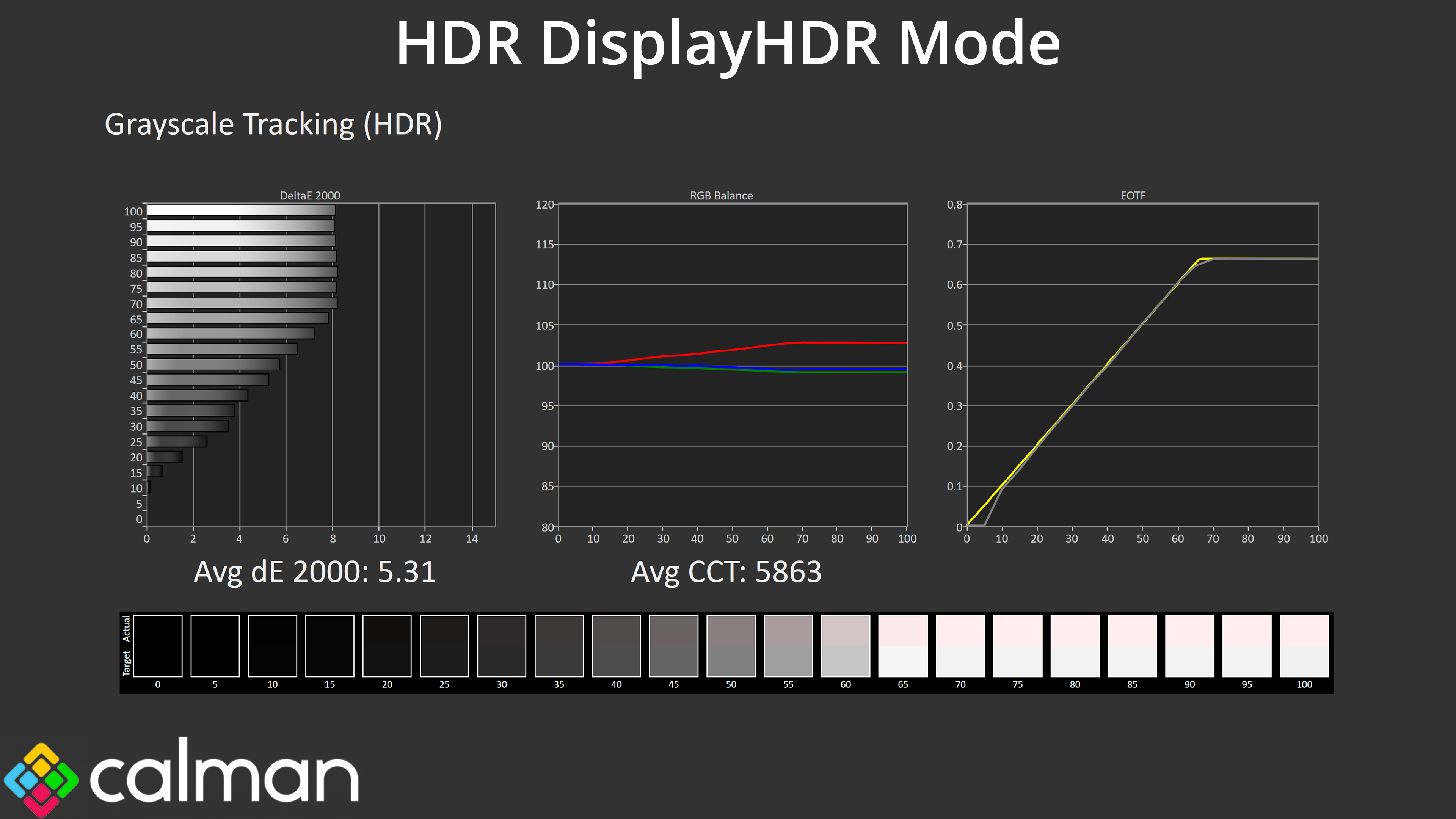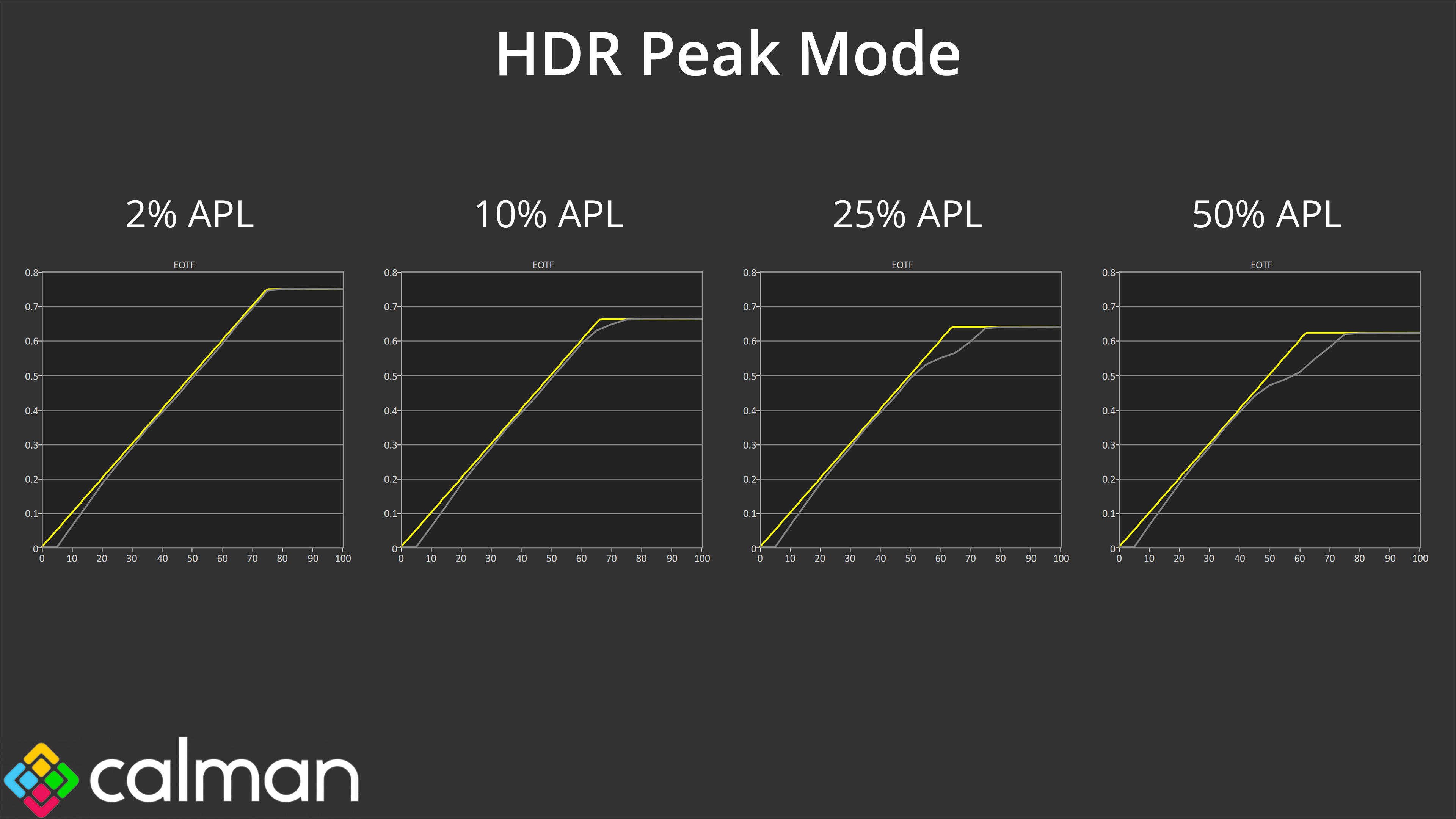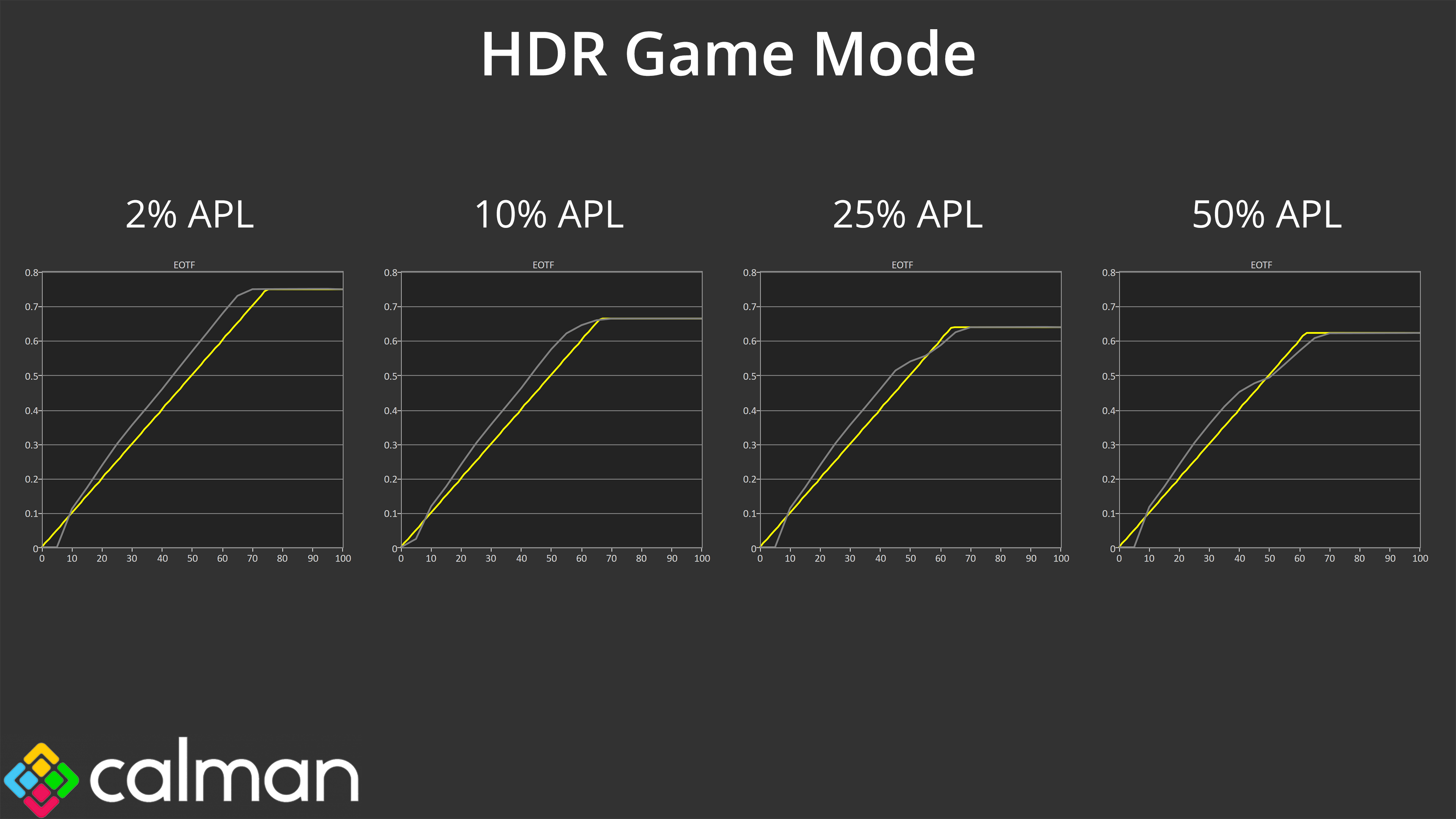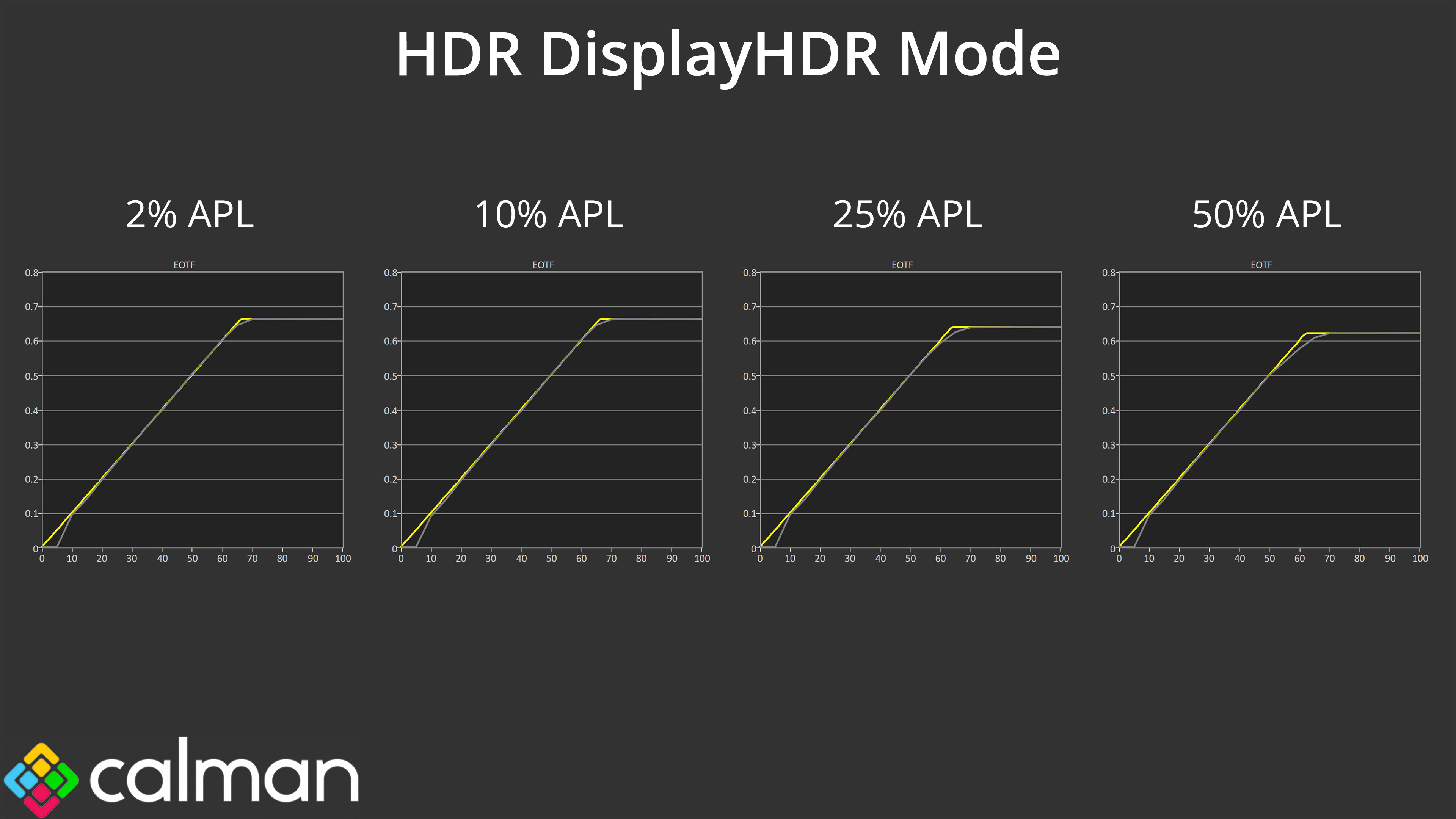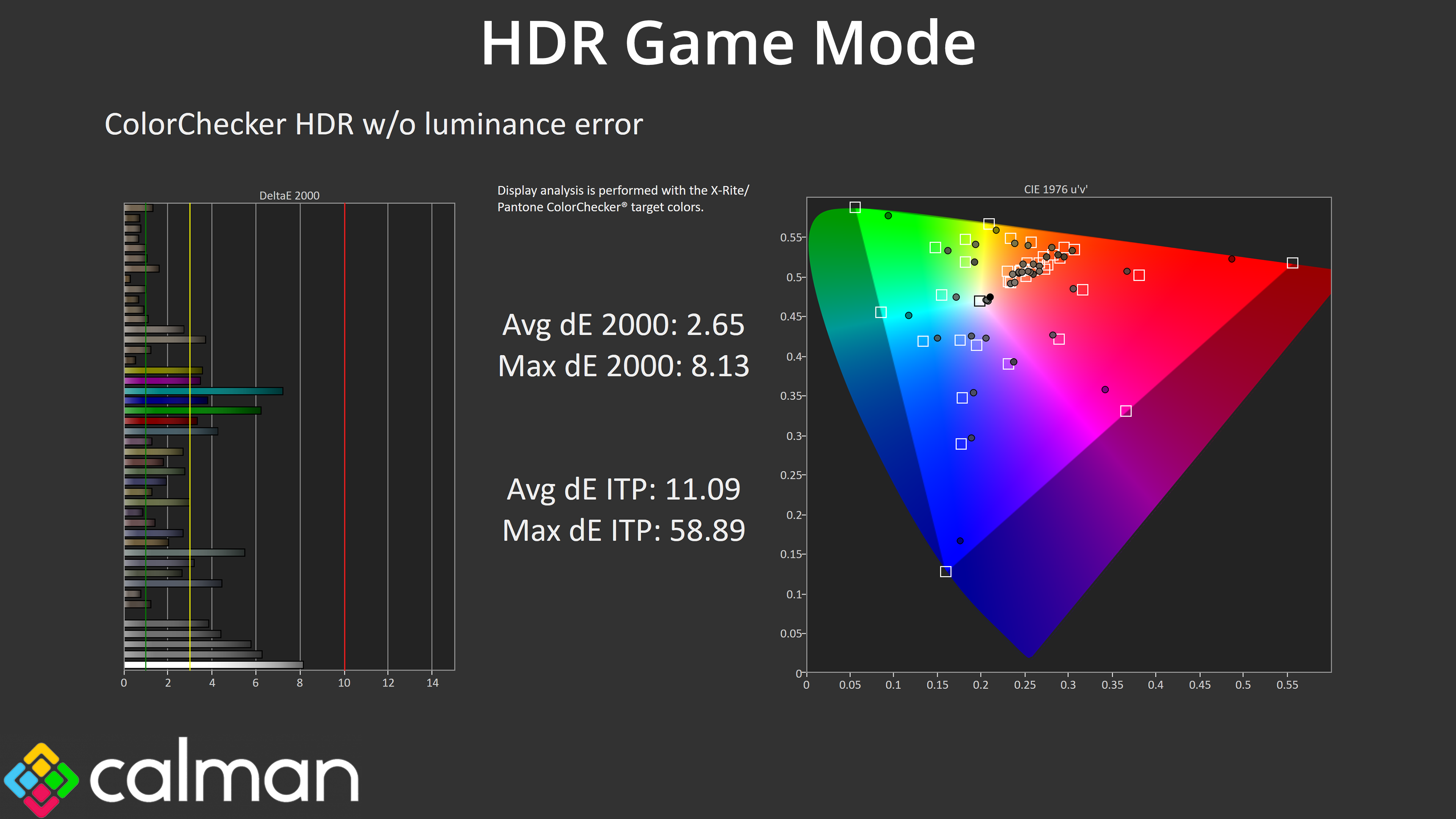HDR Testing
Following on from the SDR results on the previous page, here we re-test the relevant areas of the display with HDR enabled. Our testing focuses on three HDR modes: HDR Peak, DisplayHDR, and HDR Game.
Brightness
Starting first with brightness, we have the usual two types of behaviour from the QD-OLED panel – some modes offer peaks of 1000 nits at the 1% and 2% APLs before dimming as the window size increases, or there is the TrueBlack 400 experience, which peaks much lower but is more stable in terms of its overall brightness.
Greyscale
Behaviour is also as expected for our greyscale testing, where we use a 10% APL. The HDR Peak mode sees EOTF tracking start a little low before recovering for the mid shades, though it rolls off slightly early.
The HDR Game mode is an interesting addition as it is deliberately too bright across the EOTF curve, but I actually think from a subjective perspective, this can look better than the other two modes in practice.
The DisplayHDR mode is most accurate from a technical perspective, though all three modes are still too warm in terms of colour balance.
When looking at EOTF tracking across a range of window sizes, we can see the HDR Peak mode is still too dark across the early stages of the curve but rolls off at an ever-increasing rate, resulting in a darker than intended image.
The HDR Game mode, on the other hand, rolls off less aggressively and is generally brighter than intended – again, not technically accurate, but I do think this looks better for real-world usage.
The DisplayHDR mode is the most accurate in the sense it comes closest to the intended target. That said, I do think the HDR Game mode will look the best from a subjective perspective for HDR gaming due to its brighter presentation, while it can also hit 1000 nits whereas the DisplayHDR mode is limited to around 430 nits.
Colour Accuracy
All three modes offer similar colour accuracy for HDR though, with the worst offenders being the 100% cyan and 100% green channels, which is to be expected given the monitor doesn't cover the full Rec.2020 gamut.
 KitGuru KitGuru.net – Tech News | Hardware News | Hardware Reviews | IOS | Mobile | Gaming | Graphics Cards
KitGuru KitGuru.net – Tech News | Hardware News | Hardware Reviews | IOS | Mobile | Gaming | Graphics Cards


